Hawaiian volcanoes - Part 14.3: Ongoing eruption of Kīlauea
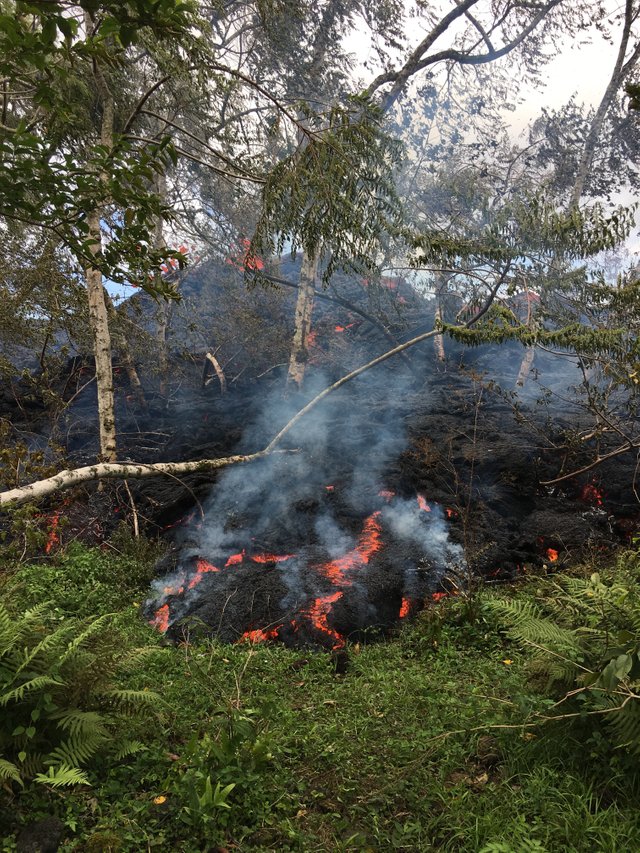
Lava slowly emerging from fissure 16.
volcanoes.usgs.gov
Volcanic activity at Kīlauea on Hawai'i is now ongoing for 2 weeks and there is no end in sight. In the ten days that have passed since my last post on the events a lot has happened.
The volcanic activity at the Lower East Rift Zone remains and the number of fissures that have openened has increased to 20 (see map below).
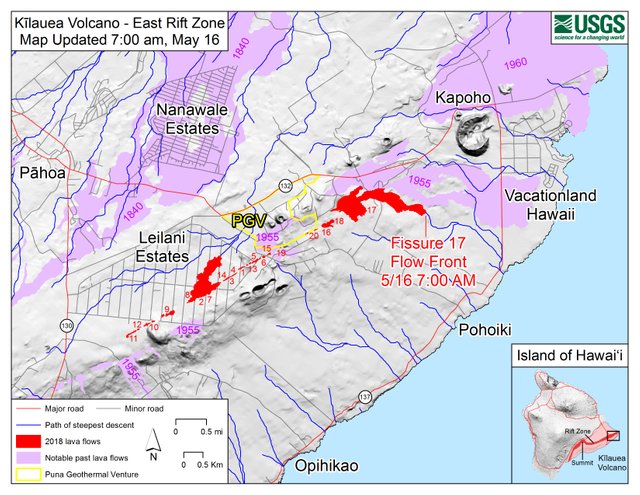
Current activity at the Lower East Rift Zone.
volcanoes.usgs.gov
Opening of fissures has advanced further northeast. Here low-level eruption of lava and spattering continues from multiple points at the active fissure system. The largest lava flow is emitted form fissure 17. This lava flow is growing daily by a few hundred meters and has currently reached a length of over 2.5 km.
Volcanic gas emissions remain elevated throughout the area downwind of the vents and the island may experience varying levels of vog.
The eruptions are still evolving and new outbreaks of lava are possible. Seismic activity and ground deformation are elevated in the area.
Future outbreaks could occur both uprift (southwest) and downrift (northeast) of the existing fissures. It is also possible that existing fissures can be reactivated. Communities downslope of these fissures are at risk from lava submersion as the conditions around the erupting fissures can change rapidly.

Opening of fissure 17 on May 13th.
volcanoes.usgs.gov
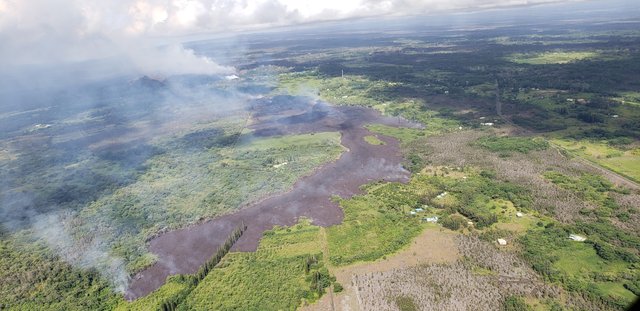
Aerial view of the active ‘a‘ā flow continuously spreading from fissure 17
volcanoes.usgs.gov
Activity at the Kīlauea Volcano's summit has remained as well. Ash emissions from the Overlook vent inside Halemaumau vary in intensity. Spontaneous increases in activity are likely caused by large rockfalls deep into the vent. Some of these events increased the ash emission and created ash plumes that rose as high as 3,000 m in the air.
Thursday morning, an explosion from the Overlook vent within Halemaumau crater at Kīlauea Volcano's summit produced a volcanic cloud that reaches as high as 9,000 m and drifted to the northeast.
At any time, activity may again become more explosive, increasing the intensity of ash production and producing ballistic projectiles near the vent. The dense ballistic blocks emitted from the crater are up to 60 cm across, and were catapulted multiple 100 m away from Halemaumau. They reflect energetic explosions and could reflect the onset of steam-driven explosive activity.
Continuous seismic activity is accompanied by ongoing deflation of the volcano. Several earthquakes have occurred over the past days and are expected to continue.
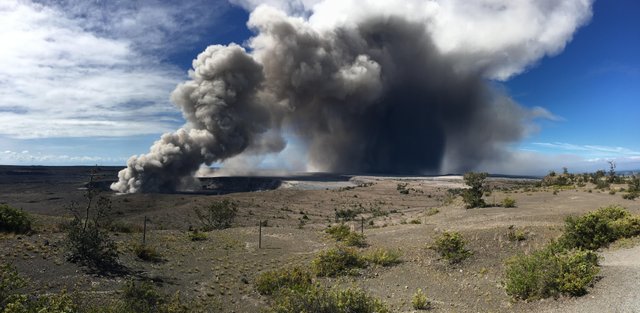
Small ash plume from Halemaumau.
volcanoes.usgs.gov
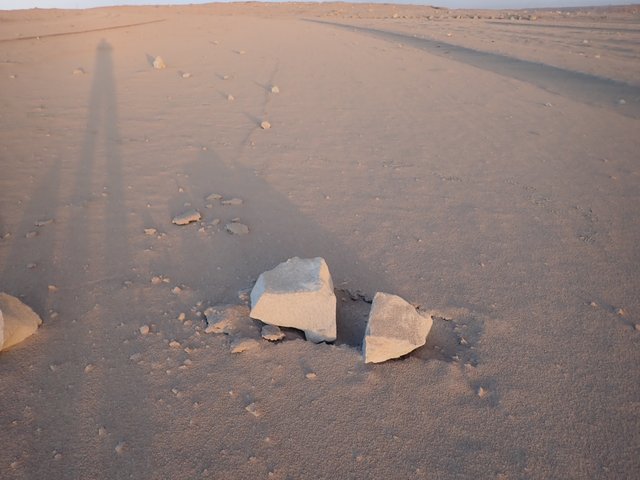
60 cm wide block that has been hurled out of the summit crater more than 100 m. The rest of the ground is covered in fine grained ash.
volcanoes.usgs.gov
Previous Posts
Hawaiian volcanoes - Part 1: Introduction
Hawaiian volcanoes - Part 2: The Hawaiian Hotspot
Hawaiian volcanoes - Part 3: A growing volcano
Hawaiian volcanoes - Part 4: The Rejuvenation Stage
Hawaiian volcanoes - Part 5: Evolution to Atolls and Seamounts
Hawaiian volcanoes - Part 6: Mythology vs Geology
Hawaiian volcanoes - Part 7: Recent eruptions
Hawaiian volcanoes - Part 8: Volcano Monitoring
Hawaiian volcanoes - Part 9: Predicting Eruptions
Hawaiian volcanoes - Part 10: Volcanic Air Pollution
Hawaiian volcanoes - Part 11: Volcanoes falling apart… from Landslides and Tsunamis
Hawaiian volcanoes - Part 12: Benefits of Volcanoes
Hawaiian volcanoes - Part 13: The Double Volcano Chain
Hawaiian volcanoes - Part 14.1: Current eruption of Kīlauea
Hawaiian volcanoes - Part 14.2: Update on the current eruption of Kīlauea

Thanks for continuing to make updates on this! The degraded air quality from ash and toxic gases is yet another huge hazard that islanders are up against. In regards to the lava flow from fissure 17, if it continues all the way to the ocean there is a school and a major highway along the route that could be at risk.
I have not read anything about the school in the news yet. Have you heard something, now that the lava reached the ocean?
Current coverage on the news is mostly about the power plant that needed to be shut down.
I have not heard anything directly about the school but I know that it is closed and still at risk. The fissures farthest to the east are still active but are flowing much slower than the ones that reached the ocean. The Puna Geothermal Venture might be spared, but it seems doubtful that it will go online any time soon...
Also interested in more updates on this.
You received a 80.0% upvote since you are a member of geopolis and wrote in the category of "geopolis".
To read more about us and what we do, click here.
https://steemit.com/geopolis/@geopolis/geopolis-the-community-for-global-sciences-update-4